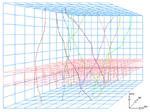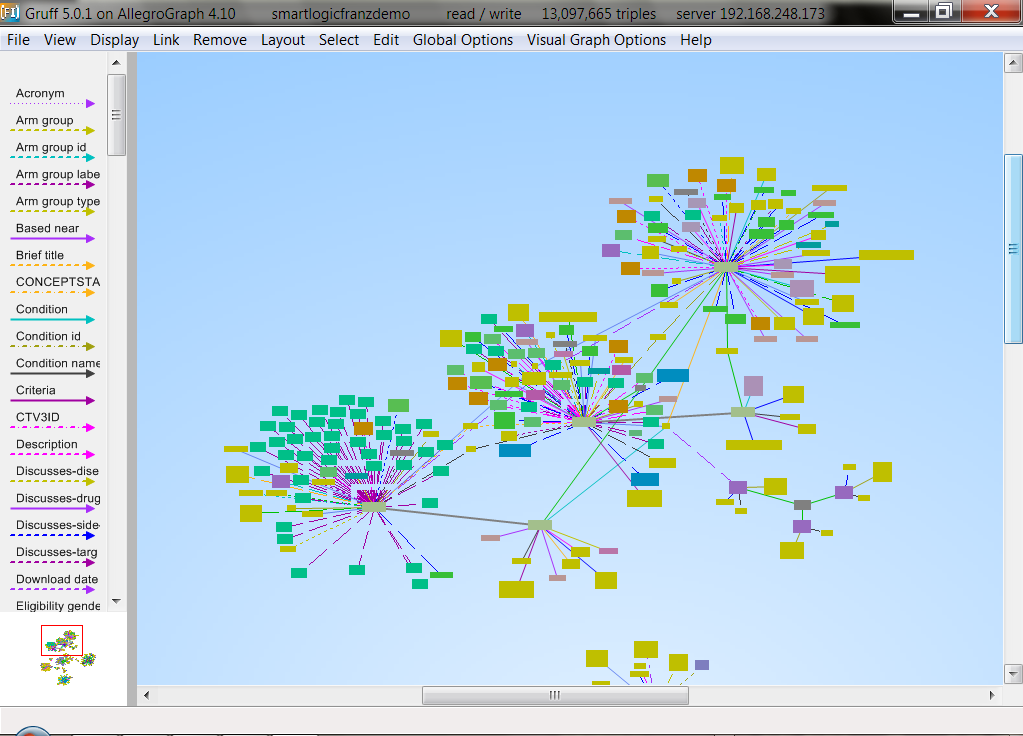Franz Tech Corner News
October, 2013
In this issue
Tech Corner Article: Major jLinker update

jLinker was significantly modified for release 9.0 and then modified again with a patch released in late July, 2013. This new patch is backward compatible with the unpatched jLinker in 9.0 but the change from 8.2 to 9.0 did include non-backward-compatible changes. The new features in the patch include connection pooling, better socket handling, and improved error hierarchy. A number of functions have been modified, but all modifications are backward compatible. The patch is for version 9.0 only, it does not apply to earlier releases.
See jlinker.htm for a complete discussion of the patch.
for a complete discussion of the patch.
Monitoring process-wait-with-timeout
When mp:process-wait-with-timeout is used with too long a timeout, a sytem can be very unresponsive to error situations, but if the timeout is too short, then it may react incorrectly to expected behavior. In this note we show how to monitor mp:process-wait-with-timeout by writing a variant function which does monitoring. (Using fwrap to monitor will result is calls to mp:process-wait-with-timeout made by the system being monitored as well, leading to confusing output.) here.
The suggested code can be found here.
Free Webcast: Tracking Moving Objects in a Graph Database

Wednesday, October 30 - 10:00 AM Pacific
Technology in our phones and cars have shaped consumers into profitable moving objects of interest. Knowing where an object is at any point in time will increase our ability to accurately predict that objectҳ behavior. Tracking moving objects is an obvious application of massively scaling NOSQL technologies and in this presentation we will argue that graph databases are particularly well suited. Graph search can show us interesting connections in our social networks and the addition of location and time allows us to reason about the when and where and help us predict future behavior.
In this presentation we discuss a query framework that can combine geospatial, temporal and social network analysis. In addition, we will discuss recent NoSQL technologies that allow finding objects within a certain geospatial and temporal bounding box with a minimum amount of joins and disk access.
We will discuss increasingly complex queries over moving objects (MOB) in extremely large databases. From simple to complicated:
- Which MOB are within a given bound from a given latitude, longitude, and time?
- Detect when two given MOBs were within a given distance.
- Given a MOB, detect all MOBs ever within a given distance.
- Find all occurrences of two MOBs within a certain distance.
In this presentation we will demonstrate the queries noted above on a real world data set and show the resulting moving objects on Google Earth.
To register for this webinar, see https://www2.gotomeeting.com/register/654138874
Free Webcast: Scalable Property and Hypergraphs in RDF

Wednesday, November 6 - 10:00 AM Pacific
There is a misconception that Triple Stores are not 'true' graph databases because they supposedly do not support Property Graphs and Hypergraphs.
We will demonstrate that Property and Hypergraphs are not only natural to Triple Stores and RDF but allow for potentially even more powerful graph models than non-RDF approaches.
To register for this webinar, see https://www2.gotomeeting.com/register/715111162
Free Webcast: Augmenting Hadoop for Graph Analytics

Wednesday, November 20 - 10:00 AM Pacific
E-commerce sites, auction sites, financial institutions, insurance companies and telephone companies all have event based data that describes transactions between customers (Social Networks) that are located in time and space (GeoTemporal).
All these transactions together form interesting social graphs and patterns of customer behavior. Some of these behaviors are very interesting from a marketing perspective, other behaviors might point to fraudulent actions. Analyzing graphs and geospatial oriented data is notoriously hard to do with typical big data solutions, such as Hadoop, so we use a hyper scalable graph database to do this analysis.
We will present a number of new technologies to make it very straightforward and user friendly to analyze behavioral patterns. We discuss extending SPARQL 1.1 with a large number of magic predicates for geospatial, temporal and social network analysis so that non-specialists can very easily build very powerful queries. We will present new visual discovery capabilities to GRUFF, a graphical user interface for Graph Search. We will demonstrate how users can explore visual graphs and easily turn interesting patterns into SPARQL queries.
To register for this webinar, see https://www2.gotomeeting.com/register/380712706
Free Webcast: Taxonomies and Ontologies for Graph Search

Wednesday, December 11 - 10:00 AM Pacific
Life Science and Healthcare organizations use RDF/SKOS/OWL based vocabularies, thesauri, taxonomies and ontologies to organize enterprise knowledge. There are many ways to use these technologies but one that is gaining momentum is to semantically index unstructured documents through ontologies and taxonomies.
In this talk we will demonstrate two projects where we use a combination of SKOS/OWL based taxonomies and ontologies, entity extraction, fast text search, and Graph Search to create a semantic retrieval engine for unstructured documents.
The first project organized all science related artifacts in Malaysia through a taxonomy of scientific concepts. It indexed all papers, people, patents, organizations, research grants, etc, etc, and created a user friendly taxonomy browser to quickly find relevant information, such as, "How much research funding has been spent on a certain subject over the last 3 years and how many patents resulted from this research".
The second project discusses a large socio-economic content publisher that has millions of documents in at least eight different languages. Reusing documents for new publications was a painful process given that keyword search and LSI techniques were mostly inadequate to find the document fragments that were needed. Fortunately the organization had begun developing a large SKOS based taxonomy that linked common concepts to various preferential and alternative labels in many languages. We used this taxonomy to index millions of document fragments and we'll show how we can perform relevancy search and retrieval based on taxonomic concepts.
To register for this webinar, see https://www2.gotomeeting.com/register/650428514
AllegroGraph 4.12 - Now Available
New features include:
- Optimizations to Callimachus Support
- Sparql 1.1 Performance Improvements
- Java Connection Pooling Enhancements
- SPARQL v1.1 support for Geospatial, Temporal, and Social Network Analytics
- OWL 2 RL Materializer - Generates triples by applying a set of rules to the current triples in the triple store and then places the resulting triples back in the triple store. For example, RDF-inferred triples can be generated before runtime rather than at runtime.
- New Webview Query Screen and Graph View (Beta) - In WebView next to the Documentation menu is a link to "WebView Beta" a new UI for Query and Graph. All existing features of WebView Query are implemented.
- MongoDB Integration - Presentation: MongoDB meets the Semantic Web
 , and a recent Webcast on MongoGraph
, and a recent Webcast on MongoGraph - SOLR Interface for free text indexes, integrated with the SPARQL 1.1 query engine. View the webcast: Making Solr Search Smarter using RDF
- SPIN support (SPARQL Inferencing Notation). The SPIN API allows you to define a function in terms of a SPARQL query and then call that function in other SPARQL queries. These SPIN functions can appear in FILTERs and can also be used to compute values in assignment and select expressions.
- Design Power and Bently partnering to deliver Design++ and Plantwise
- GenEth - A Gereral Ethical Dilemma Analyzer
- CafeOBJ
- Alstom - Smartlock Interlocking
See the full list of new features and improvements here.
Recent Allegro CL Success Stories

We continue to add descriptions of how Allegro CL products are providing solutions to complex problems across many industries, academic sites and research institutions. Here are some of the recently added stories:
To browse all of the descriptions, see here.
YouTube - The Allegro CL Channel

Videos covering Allegro CL and related technologies.
Visit the Allegro CL Channel here .
.
